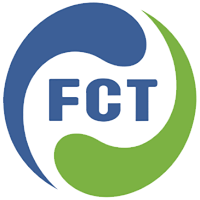Инспекција је обавезна, али некорисна активност, а наш циљ је да учинимо што је мање могуће, под условом да наставимо са испуњавањем клијентових захтева. Нула прихватни број (ц = 0) план узорковања захтева далеко мање инспекције од одговарајућег АНСИ / АСК З1.4 (раније МИЛ-СТД 105) плана и постаје одржив када је добављач изузетно поуздан у свој ниво квалитета.1
АНСИ / АСК З1.4 план се састоји од величине узорка н и броја прихватања ц. Инспектор провјерава н предмета и прихвата партију ако се утврди ц или мањи број недостатака или неусклађености. Ови планови осмишљени су тако да (отприлике) дају 95-постотну шансу за прихватање на прихватљивом нивоу квалитета (АКЛ), што је један од параметара за избор плана.
William A. Levinson, P.E., FASQ, CQE, CMQOE is the principal of Levinson Productivity Systems P.C. and the author of the book The Expanded and Annotated My Life and Work: Henry Ford's Universal Code for World-Class Success.
I was instroduced Squeglia's c=0 plan at March of 2018. I was wanted to know Squeaglia's calculation logic to define sample size.
Прочитао сам његову књигу, 5. издање, али је нисам успео сазнати. Тако да сам вам захвална на чланку. Имам једно питање у вези вашег чланка.
On Squeaglia's book, He told that he used Hypergeometric distirbution for more exact calculation, but you used only Binomial distribution
On the 5th edition, "Zero Acceptance Number Sampling Plans", I couldn't find out how he calculate sample size n.
Thanks to Mr. Levinson for his paper on C=0 sampling plans. The sample size formula presented in his paper is one of the most useful tools available. I would like to add that recently under AS9138 and ARP9013 the definitions have been standardized for Acceptable Quality Level (AQL), Equal Risk Point (ERP), Lot Tolerance Percent Defective (LTPD), and Rejectable Quality Level (RQL). They are in fact simply different points on the same operating characteristic curve having probability of acceptance 0.90-0.95, 0.50, 0.10, and 0.05 respectively. During world war two, the point-of-view of the consumer (LTPD) was abandoned in favor of the producer's point-of-view (AQL) because, as HR Bellinson stated; 20,000,000 identical items were being procured from more than 50 different suppliers, and a c=0 sampling plan was thought to be unfair to small suppliers; rejecting their product more often than large suppliers product having exactly the same quality level (ASA 105th annual meeting, January 27th 1946.). Of course AQL based sampling plans can have larger sample sizes than c=0 plans in order to "bend" the operating characteristic curve at the AQL point providing a high probability of acceptance, while still holding the same consumer's LTPD point. It is improper to say that a c=0 plan has an AQL because by design, its point-of-view is the consumer, not the producer. This is the reason for the 0.542 probability of acceptance in Mr. Levinson's example with n=15, c=0 for a lot is 4% nonconforming (4.0 AQL). We can not design a set of consistent c=0 sampling plans with the producer's risk in mind. This was the main thrust and birth of AQL based sampling plans.
With the consumer in mind - A sampling plan which is finding the nonconformities most of the time, is doing its intended job and therefore does not need to be tightened. It is only when the economics of the situation dictate that the expense of finding a few nonconformities later outweighs the expense of more inspection that we will tighten inspection.
There are many attribute sampling procedures such as MIL-STD-105, MIL-STD-1916, APR9013, and AS9138 to name a few. Most have differing poin-of-view and it all becomes a little confusing, but thankfully the underlying mathematics remains constant and reveals that it is simply a different color "lipstick" on the same OC Curve.
© 2019 Quality Digest. Copyright on content held by Quality Digest or by individual authors. Contact Quality Digest for reprint information. “Quality Digest" is a trademark owned by Quality Circle Institute, Inc.
Време објављивања: 15.10.2009

